SGLS272I october 2004 – may 2023 TPS715-Q1
PRODUCTION DATA
- 1
- 1 Features
- 2 Applications
- 3 Description
- 4 Revision History
- 5 Pin Configuration and Functions
- 6 Specifications
- 7 Detailed Description
- 8 Application and Implementation
- 9 Device and Documentation Support
- 10Mechanical, Packaging, and Orderable Information
Package Options
Refer to the PDF data sheet for device specific package drawings
Mechanical Data (Package|Pins)
- DCK|5
Thermal pad, mechanical data (Package|Pins)
Orderable Information
6.5 Typical Characteristics
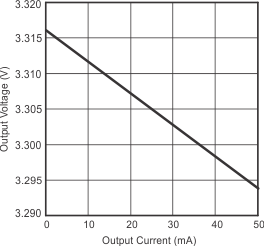
| VIN = 4.3 V, COUT = 1 μF, TJ = 25°C |
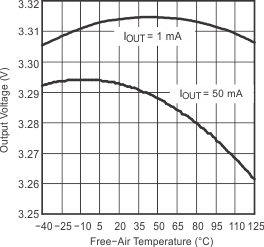
| VIN = 4.3 V, COUT = 1 µF |
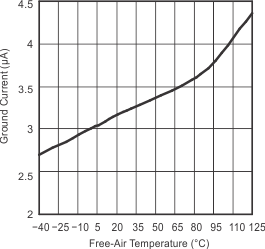
| VIN = 4.3 V, VOUT = 3.3 V, IOUT = 1 μF |
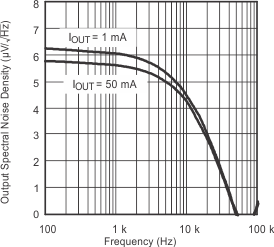
| VIN = 4.3 V, VOUT = 3.3 V, COUT = 1 μF |
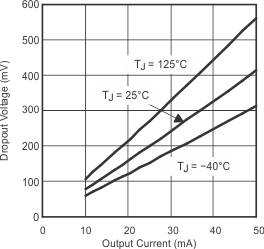
| VIN = 3.2 V, COUT = 1 μF |
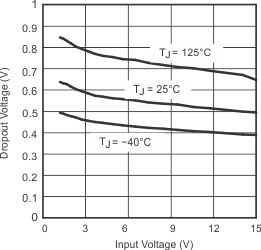
| IOUT = 50 mA |
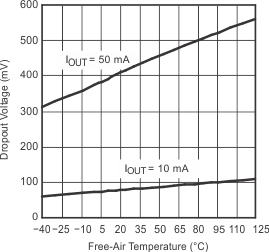
| VIN = 3.2 V |
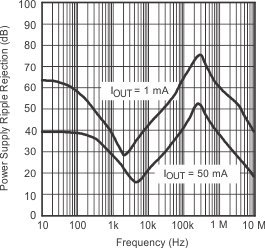
| VIN = 4.3 V, VOUT = 3.3 V, COUT = 10 μF, TJ = 25°C |
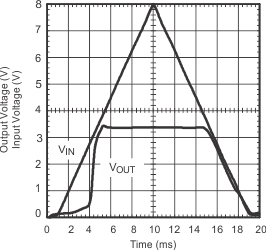
| VOUT = 3.3 V, RL = 66 Ω, COUT = 10 μF |
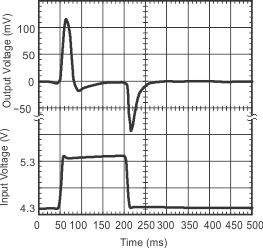
| VOUT = 3.3 V, IOUT = 50 mA, COUT = 10 μF |
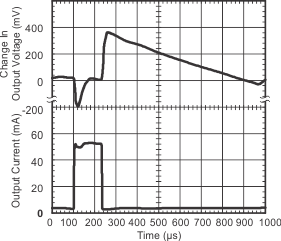
| VIN = 4.3 V, VOUT = 3.3 V, COUT = 10 μF |
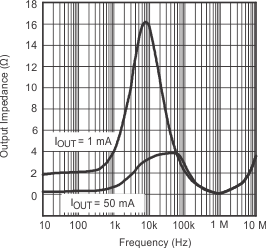
| VIN = 4.3 V, VOUT = 3.3 V, COUT = 1 μF, TJ = 25°C |

| VIN = 4.3 V, COUT = 1 μF, TJ = 25°C |

| VIN = 4.3 V, COUT = 1 µF |

| VIN = 4.3 V, VOUT = 3.3 V, COUT = 1 μF |

| VIN = 4.3 V, VOUT = 3.3 V, COUT = 1 μF |

| VIN = 3.2 V, COUT = 1 μF |

| IOUT = 50 mA |

| VIN = 3.2 V |

| VIN = 4.3 V, VOUT = 3.3 V, COUT = 10 μF, TJ = 25°C |

| VOUT = 3.3 V, RL = 66 Ω, COUT = 10 μF |

| VOUT = 3.3 V, IOUT = 50 mA, COUT = 10 μF |

| VIN = 4.3 V, VOUT = 3.3 V, COUT = 10 μF |